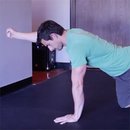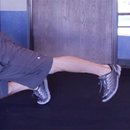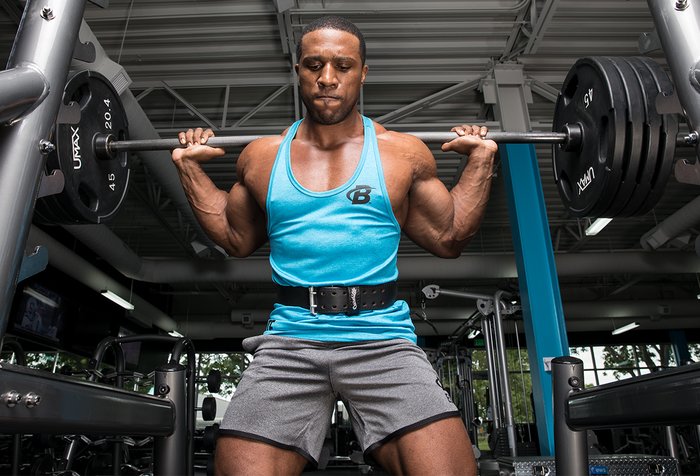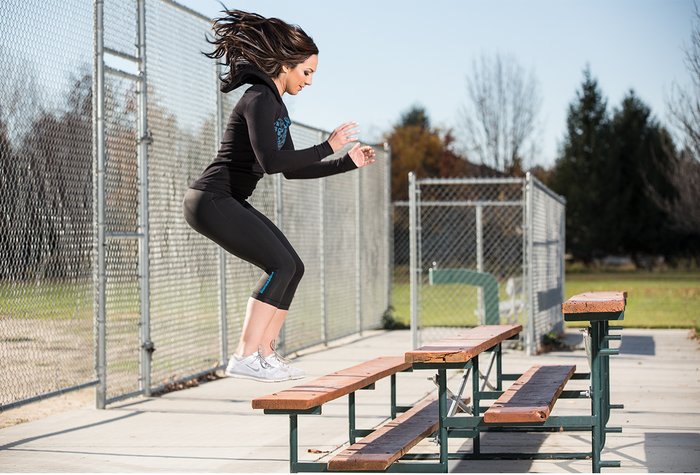The use of power measurements to guide training and improve performance has been around for decades among competitive cyclists—in large part because power meters have been around for years that enable them to measure the force they apply to the crank shaft.
Now that power meters are available for runners, too, people are seeking new ways to build more powerful strides.
If you're confused about how becoming more powerful can make you a faster runner, let's start with the difference between power and strength:
- Strength is the ability to move a load (e.g., your own body) from point A to point B. It could take 10 seconds or 1 second, but strength is not a question of time. It's strictly about the amount of weight you're able to move.
- Power, on the other hand, combines both strength and time. The more powerful your body becomes, the quicker you can move that same weight from point A to point B. It's as simple as that, and that's why one of the foundations of power running is strength training.
These four pillars of power training for running will help you develop strong, elastic legs and a resilient core to make your running more efficient—and more effortless.
- Postural Endurance
- Exercise Movement Mastery
- Competency in Strength Training
- Explosive Strength and Reactive Strength
Pillar 1: Learn How to Maintain Good Body Posture
When you're training for power—whether for lifting, running, or any other physical activity—you need to master the ability to find and maintain proper posture throughout the duration of the activity.

You can achieve significant improvements in postural endurance in a variety of ways and in as little as six weeks.[1] You have to train for it every day, but when you do, you can experience less knee pain, hip drop, and back and flexor tightness. That, in turn, can lead to greater running efficiency, faster race times, and less effort required to maintain your pace.
The key to maintaining posture endurance is performing isometric core exercises. Isometric exercises are those that don't involve spine motion. If the exercise twists, bends, or arches the spine, then it's not truly isometric.
Here's a sample isometric workout for core stability:



BodyFit
$6.99/month- 2,500+ expert-created single workouts
- 3,500+ how-to exercise videos
- Detailed workout instruction
- Step-by-step workout tips
- Training at gym or at home
- Access to Workout Plans
- Access to Bodyfit App
- Store Discounts
Already have a Bodybuilding.com account with BodyFit? Sign In

What comes with BodyFit?

- Instructional Videos
Don't risk doing a workout improperly! Avoid injury and keep your form in check with in-depth instructional videos.

- How-to Images
View our enormous library of workout photos and see exactly how each exercise should be done before you give it a shot.

- Step-by-Step Instructions
Quickly read through our step-by-step directions to ensure you're doing each workout correctly the first time, every time.
Pillar 2: Master the Basic Strength Exercises
You need to master a movement before you add speed or load to it. Makes sense, right? You don't climb onto a motorcycle for the first time and take hairpin curves at 100 mph. Assuming you value your life, you drive slowly at first and learn how to handle the bike. Similarly, you don't learn how to lift weights by starting with hundreds of pounds on the bar.

Mastering strength-building exercises comes from choosing manageable weights, using good form, and doing reps over and over again while paying close attention to make sure you use perfect form. Go light on the weight when you're trying to learn a new movement. Only once you have the pattern nailed down should you start adding weight.
Here are some of the main exercises that are particularly important to master on your way to improving your running power:
- Barbell squat
- Barbell deadlift
- Romanian deadlift
- Split squats
- Bodyweight reverse lunge
- One-legged barbell squat
Pillar 3: Don't Lift Like a Weightlifter
I typically suggest that runners never go to failure when strength training. The closer you get to failure, the more your form degrades; the more your form degrades, the greater the chances of injury. As a rule of thumb, athletes in non-lifting sports should never place themselves at risk of injury in the weight room.
As a runner, strength exercises should be to help you become a more powerful runner. Your goal isn't to become a powerlifter, so don't train like one. Powerlifters tend to lift until they can't do even part of a rep. You should leave something in the tank, stopping an exercise when you still feel like you could do another 3 reps. You'll end up with a powerful physique, minus the injuries.
In a 2017 study on the effects of strength training on elite runners, researchers found that after 40 weeks of this kind of training, participants became faster but didn't experience any noticeable body-mass changes.[2] The theory is that a certain amount of running deadens the muscle-growth effect of strength training.
Pillar 4: Focus on Developing Specific Strengths
During your running season, your focus should be on both explosive strength and reactive strength. One 60-minute session a week where you work on both of these strengths should be enough to improve your running economy, VO2 max (the maximum amount of oxygen an individual can use during maximum exercise), and speed.
Explosive Strength
When beginning to move loads more quickly, I suggest my athletes decrease their strength weights by half to do their power work. If your 1RM for the squat is 150 pounds, build your explosive strength by starting your squat at 75 pounds.

Good exercises for building explosive leg strength include:
- Barbell deadlift, cable deadlift, deficit deadlift, Romanian deadlift
- Barbell squat, box squat, jump squat, goblet squat
- Backward medicine ball throw, medicine ball chest pass, wall ball squat
- One-arm medicine ball slam, overhead slam
Reactive Strength
Reactive training helps your muscle-tendon complex behave like an elastic spring. When your foot hits the ground, your body can absorb that energy and store it inside the muscle-tendon complex and release it during the next stride. It's a bit like the way electric cars store the energy that's generated when the driver applies pressure to the brake pads. By learning how to efficiently capture and then release the energy generated from your foot hitting the ground, you can do more running with less energy.
Some of the exercises that can help you build reactive strength include:
- Linear depth jump
- Rocket jump
- Single-leg hop progression
- Lateral bound
- Box jump (multiple response)
If you have questions about tendon, muscle, knee, hip, and foot injuries, my Running Manual has the most up-to-date information on how to run safely and well.
References
- Lee, B. C., & McGill, S. M. (2015). Effect of long-term isometric training on core/torso stiffness. The Journal of Strength & Conditioning Research, 29(6), 1515-1526.
- Beattie, K., Carson, B. P., Lyons, M., Rossiter, A., & Kenny, I. C. (2017). The effect of strength training on performance indicators in distance runners. The Journal of Strength & Conditioning Research, 31(1), 9-23.


